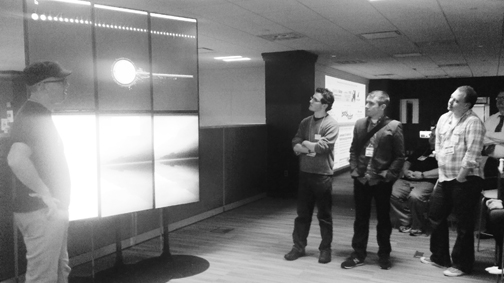
Popular opinion is that print media is dying out, as more and more readers turn to the Internet for their news. Members of the new generation are generally more compatible with the touch screen of an iPad than the pages of a newspaper, and more likely to tweet than talk about news. As the way people obtain and share information changes, the way newspapers address their audiences must also change. The Boston Globe is doing just that, introducing new technology into its offices to better serve its readers.
On Nov. 16, The Boston Globe and the Online News Association revealed these five innovations supported by The New York Times Company.
Instagram Map of Boston
The Globe’s most promising innovation in terms of revolutionizing the newspaper industry is the Instagram map of Boston. Instragram is an app for Apple products that allows users to take photographs and share them with the world, showing the location where the picture was taken on a map. The Boston Globe took this technology and applied it to the city of Boston. When users upload photos in Boston, they appear nearly in real-time on a 3000×4000 pixel digital map of Boston. This has potential because it shows what’s happening right here, right now. It’s instant photographic news.
Similar ideas have been developed outside of The Globe’s offices, including Marcos Weskamp’s text-based article map powered by Google News (http://newsmap.jp/). While the Instagram map gives photographic information, the Newsmap focuses on articles. The more coverage a news story gets, the bigger the font and frame around the story becomes. These two visual maps could become powerful tools for organizing information. In this fast-paced world with unlimited access to information, highlights are essential. Creating a visually simple but effective way of showing news might make a news company the go-to source of information.
Cascade
The Boston Globe is figuring out when and how news articles are circulated in the digital world in order to better broadcast their website. Cascade is a program that was specifically developed to track how Twitter affects their online page views. Using aesthetically appealing circular graphics and lines, Cascade maps out which Twitter handles tweeted which articles, and which accounts clicked on the link from other Twitter users. If that wasn’t enough, Cascade also has timestamps showing when this all happened. So far, The Boston Globe started to use this information to communicate to writers how important social media is to the popularity of an article, and to figure out how to increase their presence on the internet.
Page Eye
Page Eye is an Android app in development designed for readers of the print newspaper. According to creative technologist Chris Marstall, there are still an estimated 600,000 daily readers of The Globe’s physical newspaper. Page Eye allows readers to share an article they enjoyed in the newspaper by taking a photo of the article. It then finds the online link of the article so the reader can share it on networks such as Twitter. It’s definitely something I would enjoy using if I had an Android. When asked why developers chose to make an app for the Android instead of the iPhone, Marstall replied, “We just did.”
Multiple interface check
The Boston Globe tests to ensure that their website, BostonGlobe.com, is user-friendly across all devices. At least five different devices are connected to their wi-fi. These devices are placed on one desk and set up to show the same webpage at the same time. When someone goes to the front page of Boston Globe.com, the iPad, the iPhone, Macbook, PC, and Android all show the same front page.
Twitter Pole
Whenever The Boston Globe is mentioned on Twitter, it appears on one of the three screens of the Twitter pole at the newsroom. This provides a constant reminder of how well social media reaches readers.
The Boston Globe has more ideas in progress, such as the app Pinterest. In Pinterest, photos can be taken and pinned on a virtual bulletin board. This would help typographers and designers share appealing fonts and designs, finding further inspiration from each other’s work.
Newspapers will have to evolve to survive as the needs of their readers change. Change is happening already within the newspaper industry; it’s probable that very soon, innovations such as the Instagram will make news more current. People will know where and when things happen, as they happen, all on a digital screen. Regardless of how they get it, people always need a source of reliable information about the world around them, whether they get it from their monitor or by turning the pages of a paper. With newspapers going online and keeping up with technology, it’s unlikely that they’ll become a thing of the past.





















































